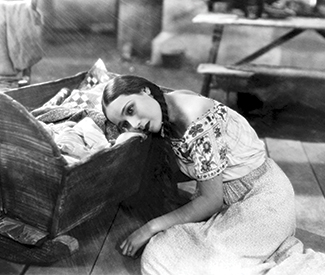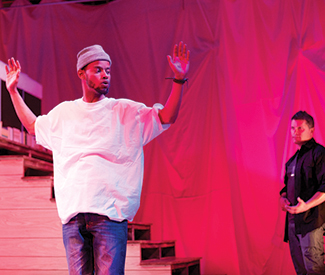Two weeks ago, the Centers for Disease Control and Prevention announced that it was recommending physicians consider Truvada, a medication used to treat HIV/AIDS, to prevent infection for high-risk patients who are HIV negative. Seen as a miracle drug by some and a “party drug” by others, Truvada has struggled to take off as a preventative measure and, prior to the CDC’s endorsement, foundered under its own controversy.
The drug regimen is known as pre-exposure prophylaxis, or PrEP, and involves taking one pill of Truvada daily. The most common side effects are initial nausea and headaches, but even those generally subside after a couple of weeks. Most impressive is the efficacy rate: Studies point to a reduction in risk of contracting HIV that is higher than 90 percent for individuals who take the medicine daily as recommended.
Additionally, the CDC has recommended PrEP only for high-risk patients — meaning gay men who have sex without condoms; intravenous drug users; and couples, gay or straight, where one partner is HIV positive and the other is negative.
“While a vaccine or cure may one day end the HIV epidemic, PrEP is a powerful tool that has the potential to alter the course of the U.S. HIV epidemic today,” said Dr. Jonathan Mermin, director of CDC’s National Center for HIV/AIDS, in a press release.
But PrEP comes with its detractors, the most vocal of whom have come from within the HIV/AIDS and gay community. PrEP users often carry the stigma of being hypersexual gay men, looking to justify their promiscuous sex lives and disavowal of condoms with a daily pill. The label “Truvada whore” soon emerged as a means to shame PrEP users (though the term is now being reclaimed by PrEP activists as a source of pride through hashtags and T-shirts).
However, the loudest critic by far has been the AIDS Healthcare Foundation, a nonprofit organization based in Los Angeles that provides care to HIV positive patients around the globe.
“This is a position I fear the CDC will come to regret,” said AHF President Michael Weinstein in a public statement. “By recommending widespread use of PrEP for HIV prevention despite research studies amply chronicling the inability to take it as directed, and showing a limited preventive effect at best, the CDC has abandoned a science-driven, public health approach to disease prevention — a move that will likely have catastrophic consequences in the fight against AIDS in this country.”
The push for PrEP is playing out like a grand battle between two formidable foes. On one side is the multi-billion dollar pharmaceutical company that produces Truvada, Gilead Sciences, headquartered just a few miles south in Foster City. On the other is AHF, the largest provider of HIV/AIDS medical care in the US. While on the surface it may seem like a massive corporation taking on the not-for-profit underdog, the reality is much more complex.
THE TRUVADA TRAIN
When Truvada was first approved by the Food and Drug Administration 10 years ago, it was a revolutionary new pill used in combination with other drugs to help control the virus in HIV-positive patients. At a time when most HIV medications required taking pills throughout the day and carried intolerable side effects, Truvada was a once-a-day godsend.
Since then, Gilead has established itself as one of the leading companies for HIV medications, producing or helping to produce many top drugs, such as Atripla, Complera, and Stribild, all of which use components of Truvada in their formulas.
But Truvada’s truly revolutionary moment came in July 2012, when it became the first drug approved by the FDA to reduce the risk of HIV infection in negative individuals.
Controversy immediately ensued.
Medicating healthy people is not a popular approach, especially when those drugs cost $13,000 annually per patient (most insurance companies, as well as Medicare and Medicaid, cover PrEP). In comparison, the CDC estimates that the annual cost to treat someone who already has HIV is $23,000. If all of the 500,000 high-risk Americans who the CDC recommends use PrEP were to begin the therapy, the gross revenue for Gilead would be $6.5 billion — all for people who aren’t even sick.
Despite the potential for astronomical profits, as of September 2013 only 2,319 unique individuals had been prescribed Truvada as PrEP, according to Gilead. Half of those patients are women, suggesting that gay men are not being aggressively targeted for PrEP. When PrEP users who are part of research studies are included, the total number of patients is still estimated to be under 10,000.
One reason for the slow start is a lack of awareness. Outside of big cities, there is less dialogue surrounding HIV and prevention techniques. And even in metropolitan areas, familiarity with Truvada is often limited to the HIV specialist doctors treating patients who already have HIV and wouldn’t benefit from PrEP.
“We get a fair number of patients here who are rejected for PrEP from other physicians in the city,” said Dr. John Nienow of One Medical Group in the Castro. “I haven’t heard about widespread adoption in other offices, but I have heard of other physician groups not wanting to prescribe Truvada for PrEP.”
When asked whether the recent CDC announcement endorsing PrEP would change that, Nienow was hopeful.
The CDC announcement “will educate and legitimize PrEP’s use on a widespread basis,” he said. “I think physicians might be uncomfortable prescribing it, and this will make them more comfortable.”
Another reason PrEP has failed to gain traction is that Gilead has spent virtually no money on advertising its own drug. Well, sort of. It is true that Gilead has avoided advertising campaigns — drug companies that push their own drugs tend to stir up controversy — but many of the organizations that have come out publicly in favor of PrEP have received grants from Gilead. According to tax forms, Project Inform and the San Francisco AIDS Foundation, two prominent local nonprofits that support PrEP, have both received large donations from the pharmaceutical company.
One such grant was awarded to Project Inform, for the group to produce videos about PrEP targeted toward young gay men, particularly men of color, according to David Evans, director of research advocacy.
Was this donation a part of Gilead’s marketing strategy? It’s tough to say for sure; Gilead did not return Bay Guardian calls seeking comment.
Regardless of money, it is clear that a new approach is needed for combating HIV. New infections in the US have stubbornly hovered at around 50,000 incidences per year since the ’90s, despite pushes for condom usage and education efforts.
“Yes, PrEP is working. It works when it’s adhered to,” Nienow said. “It’s been extensively studied in populations at risk for HIV, and the conclusion was that it is dramatically successful. So much so that one expert even said that the debate about efficacy is now over.”
FROM SELF-PROTECTION TO “SLUT”
It’s true that the AIDS Healthcare Foundation is no billion dollar corporation such as Gilead. But with an operating budget this year of $904 million and a presence in 28 countries, AHF is still a force to be reckoned with.
Though the list of organizations that are loyal exclusively to condoms as a method of prevention is dwindling, AHF has been one of the most powerful and resolute allies of latex protection since the very beginning. Even before Truvada was approved by the FDA as PrEP in 2012, AHF campaigned to prevent it from happening. Even though AHF may be growing more and more isolated in its anti-PrEP stance, it is anything but ready to give way.
Though the efficacy rate for using PrEP is upwards of 90 percent reduction in risk, AHF and other critics consistently cite a drastically lower 40 percent reduction. The difference between these two figures lies in patient behavior: When Truvada is taken correctly, that is, every day without skipping doses, then it’s been shown to reduce new HIV infections by over 90 percent. However, when research studies publish data they must include all participants, regardless of whether they took the dosage as instructed. Average out the effectiveness of the drug between participants who adhered religiously and those who didn’t take it at all, and you arrive at about a 40 percent reduction in risk.
But as AHF points out, the outcome for the participants who did not follow instructions is an important reality that should not be overlooked.
“When you read these studies carefully, what they say is that research modeling can be whatever percent effective, but research modeling is not real-world applicable,” said Ged Kenslea, AHF director of communications. “In every study participants were given incentives and paid to participate,” yet still didn’t adhere to instructions consistently.
“We can’t even get people who already have HIV to take their pills as prescribed,” Kenslea added.
Even amid legitimate concerns about health risks associated with improper use of PrEP or its inability to act as a safeguard against other STDs, much of the debate has become infused with anti-PrEP rhetoric rooted in stereotypical assumptions about the promiscuity of gay men. Patients who use it to protect themselves are reduced to “Truvada whores,” men who live capriciously and are always on the lookout for their next fuck.
“The last couple of years that we’ve been prescribing [Truvada], there have been reports from patients who have received negative reactions from some people,” said Nienow. “Some people, particularly online, regard it as a marker for whores and promiscuity, and others as a marker for self-protection. The stigma kind of ranges from, ‘Great, you’re protecting yourself,’ to, ‘Horrible, you’re a slut.’ My patients have seen all of those.”
Just last month, AHF President Michael Weinstein referred to Truvada as a “party drug,” setting off such a fury that a petition to remove him as head of the organization is now circulating around the Internet. It has amassed nearly 4,000 signatures.
AHF’s policy of championing condoms above any other method is strange, considering that it cites poor adherence to Truvada as the drug’s primary downfall. While the efficacy of the drug clearly drops when it is not taken correctly, AHF critics point out that condoms are not used consistently either, and having multiple methods of protection is better than one.
After viewing donations by Gilead to HIV/AIDS groups, the Bay Guardian requested a list of donors from the AHF as well, but the organization provided a 2012 tax form that did not include a donor list.
PrEP does have some efficacy, Kenslea said, and AHF clinicians are free to prescribe Truvada as a preventative drug.
“If an AHF physician feels that prescribing PrEP is appropriate, then we do not stop that,” Kenslea said.
Still, AHF’s uncompromising reluctance to consider endorsing PrEP is puzzling. AHF leaders repeatedly list reasons that the drug will not work, despite mounting scientific evidence stating the contrary. There is no doubt that PrEP should not be taken lightly or with a blasé attitude, but why eschew it with such fervor?
“We are not refuting the science,” Kenslea said. “We are disagreeing on the understanding of human nature.”
A DAILY ROUTINE
When Damon Jacobs re-entered the dating game in 2011, it was a completely different playing field from what he remembered. At first, he wasn’t sure what to expect after coming out of a seven-year relationship with his boyfriend, but he quickly realized there were some significant differences since he had last played the field.
“For me, getting back into the dating world and the cruising world, I was realizing that people were not using condoms as they were a decade earlier,” Jacobs said. “And I wasn’t using them like I was in 1990’s San Francisco either.”
But even scarier than Jacobs’ risky behavior was the reasoning behind it.
“I noticed that my thinking had changed,” he admitted. “I started thinking of HIV as a ‘when,’ not an ‘if.'”
It was during that time when the PrEP studies were just beginning to be published. After attending a forum about using an HIV treatment drug to prevent HIV, Jacobs gathered all of the information he could on this unconventional approach and ran back to his doctor. He knew he wasn’t being as diligent to prevent HIV as he once had, and PrEP seemed like an effective way to stay negative.
His physician had never heard of giving Truvada to a patient without HIV, but Jacobs showed him the research and promising results. He began taking PrEP in July 2011, exactly one year before its FDA approval for HIV-negative individuals.
“Those of us using PrEP now, we were the first ones asking for this, so we’ve had to be the educators and the advocates,” Jacobs said. “We even educate the doctors. Some doctors take that and say, ‘yes, I want to work with you.’ Others give tacit dismissal, and then some tell outright lies about it.”
In the past three years, Jacobs has never missed one of his daily pills. He has built it into his everyday routine: eat breakfast, brush teeth, take PrEP. If you can remember to brush your teeth, he postulates, you can remember to take your pills.
Unfortunately, Jacobs has dealt with the stigma that surrounds PrEP as well.
“If I’m on a date with someone who is negative and he finds out, he’ll ask me, ‘Oh, so you’re a whore? Do you have sex with everybody?'” Jacobs lamented. “It’s not a common reaction, but it stems from a misunderstanding of what PrEP is.”
Instead of being offended, embarrassed, or angry, he takes the time to educate, often resorting to the same analogy: that it’s very similar to women taking birth control; it reduces the unwanted consequences of condom-less sex.
Even though Jacobs disagrees with today’s critics of PrEP, he seems to understand where they are coming from. He volunteered with the Stop AIDS Project in San Francisco in 1992, while HIV was crippling the gay community and condoms were considered the only safeguard from a then-fatal virus.
“Michael Weinstein’s message has been that people should use condoms,” said Jacobs. “When I started volunteering at Stop AIDS [Project], we had a marketing campaign where we gave out pins and T-shirts at local bars and clubs that said, ‘100%’ because we knew that if everybody used condoms 100 percent of the time, we could eradicate AIDS by 2000. “Well I ask you, how did that pan out?”












